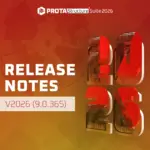
ProtaStructure Design Guide Assessment & PBD to ASCE/SEI 41
Introduction
ASCE/SEI 41-17—“Seismic Evaluation and Retrofit of Existing Buildings”—is the industry standard for assessing seismic performance in existing structures. Moreover, it uses performance-based design principles. Consequently, the standard defines a three-tier process: initial screening, detailed analysis (linear & nonlinear), and acceptance checks against clear performance objectives. Additionally, it covers both deficiency-based and capacity-driven approaches. Finally, foundations, structural frames (steel, concrete, masonry, wood, cold-formed steel), nonstructural components, and specialized systems (seismic isolation, energy dissipation) must all meet set safety and functionality levels under seismic loading.
ASCE 41/17 Seismic Definitions
The standard defines four performance levels: Operational (1-A), Immediate Occupancy (1-B), Life Safety (3-C), and Collapse Prevention (5-D). It also defines four hazard levels: BSE-1E, BSE-2E, BSE-1N, and BSE-2N. Each level links to a 50-year exceedance probability. Site soils are classified into six categories for spectral amplification. Spectral parameters (Ss, S1, SXS, SX1) and a general horizontal response spectrum are introduced.
ASCE 41-17 Building Assessment
ProtaStructure uses Tier 3 Systematic Assessment. It requires thorough data collection and condition surveys. Engineers build advanced linear and nonlinear models. They assign a knowledge factor (κ) and set performance objectives. Demand–Capacity Ratios (DCRs) are calculated for each component. Strengthening measures are then designed where needed.
Linear Procedures
The Linear Static Procedure (LSP) applies equivalent static forces per §7.4.1. The Linear Dynamic Procedure (LDP) uses modal or response-spectrum analysis per §7.4.2.1. Components are either force-controlled (brittle) or deformation-controlled (ductile). Acceptance requires modified capacities to exceed demands:
• Deformation-controlled: mk·QCE > QUD
• Force-controlled: k·QCL > QUF
Nonlinear Procedures
The Nonlinear Static Procedure (NSP) uses pushover analysis with full backbone curves and gravity loads. Then it idealizes these curves into bilinear approximations with factors C0, C1, and C2. The Nonlinear Dynamic Procedure (NDP) runs time-history simulations under real ground motions. Both methods include convergence checks. They must meet acceptance criteria:
• Force-controlled: γ·χ·(QUF – QG)+QG ≤ QCL
• Deformation-controlled: plastic rotation limits
Application of ASCE 41-17 in ProtaStructure
Users define model geometry, materials, and mesh. They enter existing reinforcement in detail or with global/member ratios. ASCE7 [2016] is selected as the earthquake code. Then users set seismic parameters (SDS, SD1, Fa, Fv, damping). Finally, strength reduction factors are assigned for columns, shear walls, and beams.
Existing Building Assessment
The Assessment Wizard walks users through method selection (LSP, LDP, NSP, NSP Multi-Mode, NDP). It covers knowledge factor assignment and performance objective setting. Users select and scale ground motions for NDP. The wizard then runs the analyses and shows real-time logs and progress bars for each direction and mode.
For detailed information, review the PDF by clicking the button below.Additional Resources
Visit the Prota Software Community Page for resources and examples. You’ll find Webinar Recordings, a Project Gallery, and our YouTube Channel.







